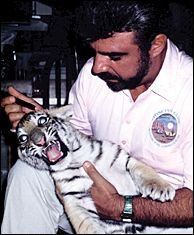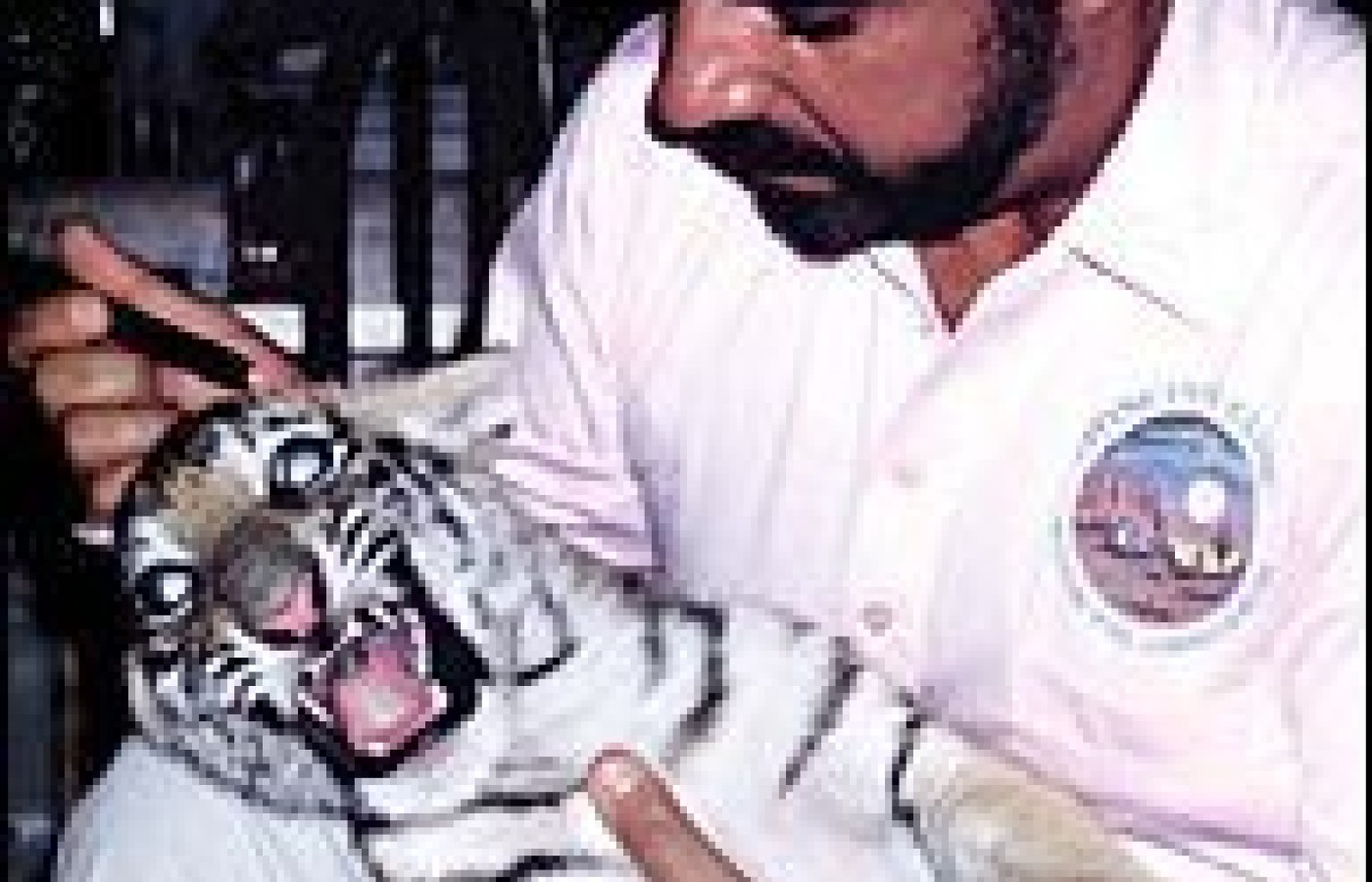Whether you accept it, avoid it or live somewhere in between, insurance coverage has become a defining issue for our profession. Patients increasingly expect to use their benefits, practitioners want to be compensated fairly for their time and expertise, and the system itself remains – at best – fragmented. The encouraging news is that coverage has expanded in meaningful ways. The challenging news is that reimbursement, across the board, remains inadequate.
Acupuncture in Veterinary Medicine
In the fall of 1979, I was fortunate to be included on one of the first State Department approved list of observers to visit the People's Republic of China. One of my first acupuncture experiences was to assist in the performance of acupuncture on a hog in rural Liaoning lrovince in the Dongbei region of northeast China. Two thousand years ago, the ancient city of Mukden (now known as Shenyang) had become a major trading post to peoples living north of the Great Wall. Shenyang would ultimately become the court of the Manchu ("the masters") and the capital of Manchuria. It sits in a pivotal position, on the land route to both Korea and upper Mongolia.
During the procedure, it was explained the acupuncture points of large animals are primarily based on the human anatomical transposition of human points onto animals. In other words, just place the human in the "all-four" position, much like an animal. The acupuncture points are virtually in the same location. Since the cow, pig, horse, camel and donkey were of vital importance to the ancient Chinese, veterinary acupuncture was developed and texts were written dealing with these animals. Even though there have been more than 70 texts on animal acupuncture noted through history, only 16 exist today.

Most of the information on veterinary medicine comes from the T'ang dynasty, which is usually recognized to have occurred from approximately 600 AD to 900 AD. During this period, due to the military requirements on the northern front many horses were raised specifically for the ever-increasing military presence and its purposes. Recognizing the tremendous importance attached to the health and welfare of the horse, the T'ang dynasty established an actual department and school of veterinary medicine. This was the first formal education of this type in the history of China and the world. Even though the T'ang dynasty is credited with the formalization of veterinary acupuncture, the Spring and Autumn Warring States period, which occurred from approximately 400 BC to 200 BC, produced the historic practitioner who to this day is considered "the father of Chinese veterinary medicine," Shun Yang. However, the earliest recorded practitioner of veterinary medicine was during the Chou dynasty, around 950 BC. Chinese medicine was first introduced into Korea in the Chou dynasty, and then into Japan by way of Korea. Numerous contributions to both human and animal acupuncture have been made by both countries especially during the years 1100 to 1600.
The Jesuits of France were a presence in Macao and as far as Peking (Beijing) as early as 1582. The French Jesuit Harvieu published the first work in a European language on human acupuncture in 1671. However, it was not until 1836 that the first mention of veterinary acupuncture appeared in print in France. The case reported was of a paralyzed ox that was treated by implanted needles 3 inches long in two rows bilateral to the lumbar spine. The needles were described as being driven in with a mallet and left in place for two days. In England, a passage from the British Veterinary Journal of 1828 stated, "Two things, however are sufficiently evident, that the sudden and magical relief which the human being has sometimes experienced has not been seen in the horse; and that, probably from the thickness of the integument, the animals suffered extreme torture during the insertion of the needles."
During the last dynasty recorded in China's long history, the Ch'ing dynasty (1644 to 1912), there was a countrywide epidemic that had been catastrophic to pigs. As a result of veterinary acupuncture, the disease process was cured and eliminated. In 1900, the book A Complete Collection of Pig Diseases was published. It was the information from this book that was being shared with me on that rural farm in Northeastern China in 1979.

It was not until 1917 that the first "school for Chinese medicine" for humans patterned after Western medical schools was established in Shanghai. The school was privately financed and was the first school of its kind to offer a formal program and diploma in Chinese medicine. There were no schools at this time of Chinese veterinary medicine; only Western style schools awarded degrees in veterinary medicine. In 1944, Chairman Mao Tse Tung issued a directive of historical proportions when he wrote "... if the modern practitioners of human and veterinary medicine do not unite with the more than one thousand traditional practitioners in this region and help them progress in knowledge and ability, they are in fact helping evil and letting many humans and animals die of diseases."
In 1947, the formation of the beginning of modern Chinese veterinary medicine developed with the establishment of the School of Agriculture of the Northern University. This entire school was devoted solely to Chinese veterinary medicine, which focused only on large animal applications. There has never been a development of small animal practice in the history of China, as there is literally no demand for its use due to the cultural differences between the East and West regarding the owning of pets.
Acupuncture anesthesia was first developed in humans in 1958, and first applied to horses and donkeys in 1969. Analgesia was first used outside of China on humans in 1972 in Austria, where the first surgery for a tonsillectomy in the Western world was performed.
The history of American veterinary acupuncture had its root beginnings following the national public interest shown in China and acupuncture in 1971-72. Unknown to most in the profession, acupuncture's history in the U.S. is quite startling when one considers just a few of its inclusions in the American medical scene.
Acupuncture for human applications has appeared in American medical texts since 1822, when the Treatise on Acupuncturation appeared in print. This was a review of a British booklet. In 1825, the French book Memoir on Acupuncture appeared in the U.S. By 1829, a three-page section on acupuncture appeared in the surgical text Elements of Operative Surgery. In the July 28, 1888 issue of Scientific American, a two-page article on "electric acupuncture" appeared.
Perhaps the most famous 20th-century reference to acupuncture, outside of the 1971 New York Times article by James Reston titled "Now, About My Operation," came from the 1907 book Principles and Practice of Medicine (and the 1917 book by the same name) whereby famed surgeon and medical practitioner Sir William Osler stated "... for lumbago acupuncture is, in acute cases, the most efficient treatment. Needles of from 3-4 inches in length (ordinary bonnet needles, sterilized, will do) are thrust into the lumbar muscles at the seat of the pain, and withdrawn after 5-10 minutes. In many instances, the relief is immediate, and I can corroborate fully the statements of Ringer, who taught me this practice, as to its extraordinary and prompt efficacy in many instances... ." Sydney Ringer would be recognized as one of the greatest physicians in history, having discovered the isotonic electrolytic infusion solution still used today and known as Ringer's Solution. A sidenote is that Dr. Ringer was British; however, his two brothers amassed great fortunes in Asia - one in Shanghai and the other in Nagasaki, Japan. One brother, Frederick, was so successful he became known as the "King of Nagasaki." Dr. Ringer obviously learned acupuncture through one or both of his brothers and taught it to Osler. The 1910 book The Principles and Practice of Chiropractic by D.D. Palmer, the founder of chiropractic, also made specific references to acupuncture.
Throughout the political history of all of the professions that have pioneered acupuncture in North America, the road for the veterinary profession has been quite rocky and tumultuous. Following interest in acupuncture by a few doctors of veterinary medicine (DVMs) in 1972, Dr. David Bressler of UCLA was contacted, and acupuncture procedures were initiated in southern California on a variety of cases that had been deemed hopeless, as they had all failed to respond with conventional Western medicine. The responses from the variety of these test cases were overwhelmingly successful. This project was under the guidance of the National Acupuncture Association, which Dr. Bressler had founded and presided over at UCLA.
The National Association for Veterinary Acupuncture was formed in 1973; the International Veterinary Acupuncture Society was founded in 1974. By 1975, symposiums were being conducted by the Chinese Academy of Medicine and held at the University of Cincinnati, University of Georgia, Purdue University, University of California School of Veterinary Medicine, and others. The American Veterinary Medical Association took a very cautious position in the early formative years of acupuncture, and in 1974 issued a formal statement which said, "The AVMA has serious concerns about acupuncture, regarding it as entirely experimental until strong evidence is available that the procedure has therapeutic value in animals and additional cases have been evaluated."
Since those early days in the United States, veterinary acupuncture has become increasingly popular, with more than 500 certified doctors of veterinary medicine as practitioners in North America alone. Its clinical use ranges from equine to feline to canine and avian. The success rate borders on the astonishing in a variety of conditions that are known and unknown to the human patient.
Most licensed acupuncturists' state licenses deal only with the treatment of the human and do not include animal applications. However, as an acupuncture practitioner, it behooves us to know of a qualified veterinary doctor who utilizes acupuncture and refer to them as necessary. You will find that the DVM who uses acupuncture will reciprocate the referral.
Veterinary acupuncture has come a long way in America from the vision of the original three DVMs who started it, Drs. R.S. Glassberg, Marvin Cain and H. Grady Young. I am proud to say I knew these individuals and was honored to have studied with them at the first official symposium on "Acupuncture for the Veterinarian" in Kansas City in 1974. They are to be commended for following their vision. As a result, the Siberian tiger which was shown with me being treated with laser beam earlier in this article, did not have to be euthanised as originally planned. Incidentally, there are no known acupuncture charts in the history of the world for a Siberian tiger. Just treat the points of the animal as if it were a human with the same protocols.
Best wishes for a phenomenal 2005, the Year of the Rooster! I wonder: How do you find the points on a rooster?



